Laura Sartori Rimini of AD100 Studio Peregalli's London Home is a Layered, Historic Jewel-box
One half of the AD100 design firm Studio Peregalli, Laura Sartori Rimini was perfectly happy jetting to London from her home base in Milan and checking into a hotel—usually Claridge’s or Blakes—when projects required her attention. But that habit came into question a few years ago when her daughter, Vittoria, announced that she wanted to attend school in England.
“It was a little bit of a shock because she was supposed to finish her studies in Italy, high school and then university,” says Sartori Rimini, a lean, elegant blonde with the looks of a 1930s movie siren, though one with a perpetual half-smile. Her husband, Emanuele, a dashing attorney and professor of law at Milan’s Università degli Studi, disagreed with their daughter’s surprising change of plans, but his wife smoothed the familial waters. “If she was asking, then she needed to do it,” Sartori Rimini says. “So I think, as a mother, I had to help her.” She did, and eventually establishing a pied-à-terre sprang to mind, “to have a little shelter for Vittoria, for me if I was going to visit her, for the family, for anyone. And, then, also for my job.”
Since Sartori Rimini’s career entails decors perfumed with old-fashioned connoisseurship and uncanny evocations of the long ago—see her and business partner Roberto Peregalli’s 2018 book, Grand Tour: The Worldly Projects of Studio Peregalli—it stands to reason that she would end up in Tite Street, a pretty thoroughfare of tawny-brick, late–19th century townhouses where avatars of the Aesthetic Movement, among them Oscar Wilde, James McNeill Whistler, and John Singer Sargent, once held all of London spellbound. Whistler actually lived next door to Sartori Rimini’s building, and given the darkly glimmering harmonies of her one-bedroom flat, the firebrand impressionist would surely find much to recommend. One can easily imagine a smitten Whistler coaxing a bemused Sartori Rimini to sit for a portrait chez elle and calling the resulting masterwork Arrangement in Amber and Ruby.
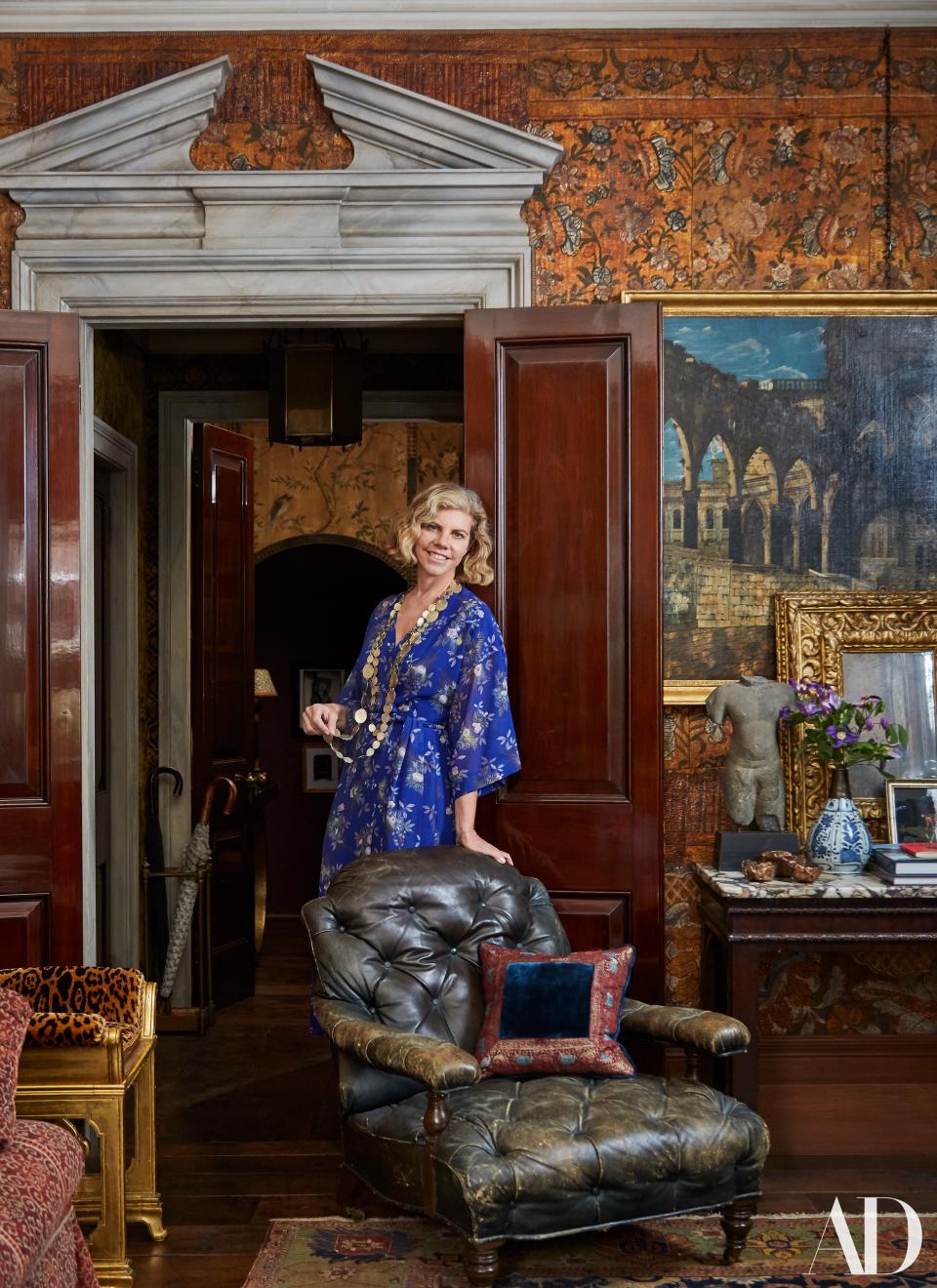
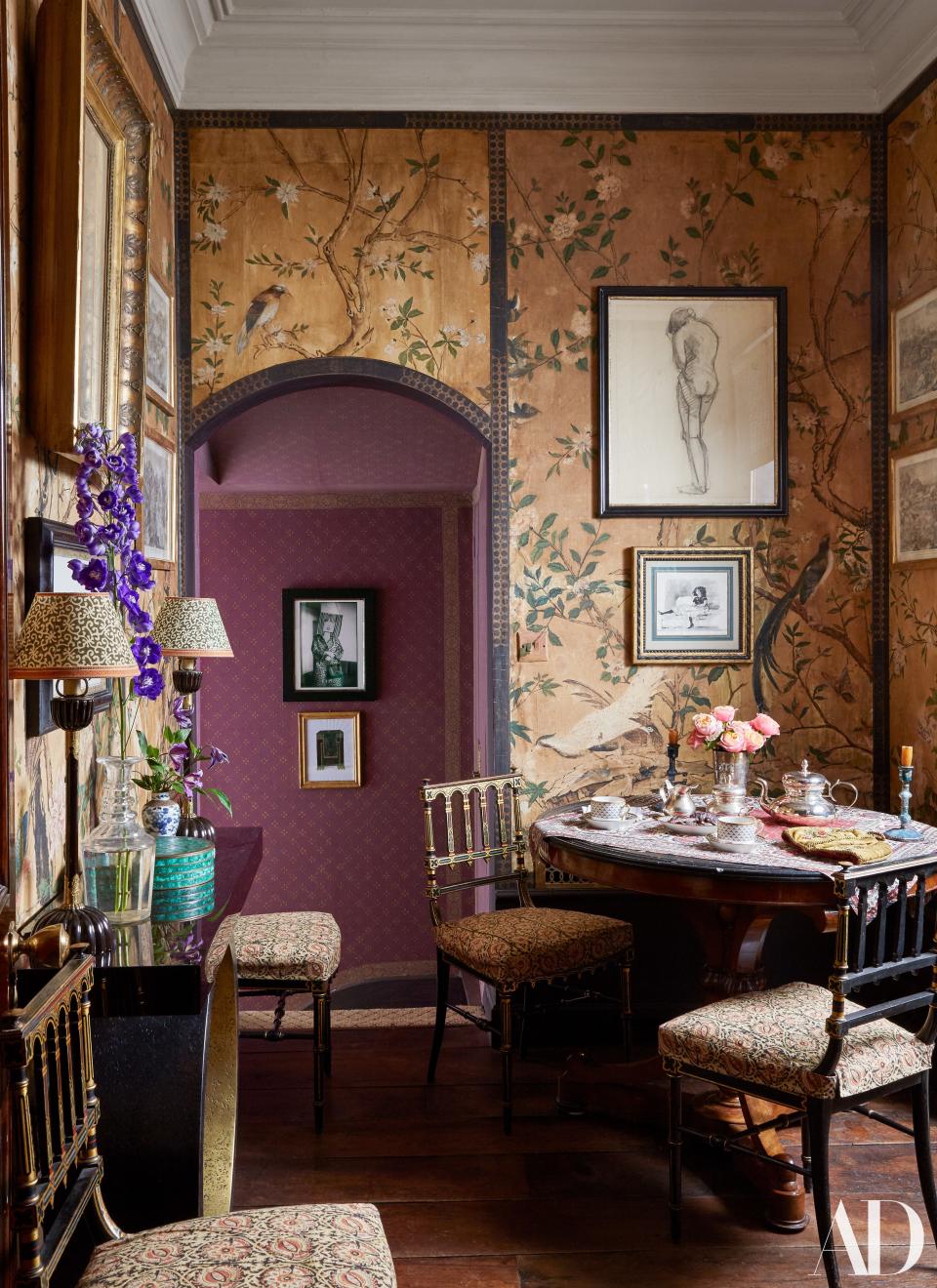
“I wanted an English home with many layers,” says the designer, who bemoans what one could describe as “stateless chic,” expensively neutral decors that have become de rigueur for international oligarchs in London. “England is a little country,” she continues, “but they conquered half of the world and brought back a lot of remembrances.”
Her flat’s jewel-box settings, achieved with Peregalli’s input, were sparked by a set of antique gilded and hand-painted leather panels that once belonged to the Duchesse de Berry, Charles X of France’s intriguing daughter-in-law. Possibly Spanish or maybe Venetian, the “very, very ruined” panels were spotted at an auction, restored, and then installed in Sartori Rimini’s living room. Patterned with a whirlwind of flowers, the wall covering might seem extravagant for such a modest bolt-hole, but that’s rather the point.
“A pied-à-terre is not a house you live in every day,” Sartori Rimini observes. That being said, she adds, “You should just open the door and feel cozy—all you need are fresh flowers.”
Blossoms of the eternal variety fill her rooms, dappling walls, an 18th-century Persian carpet (“a little bit faded and shabby”), mismatched cushions, chair seats, even a tapestry fire screen. “I always love nature in the house,” says the designer, who delights in the knowledge that the annual RHS Chelsea Flower Show takes place just a few blocks away. Japanese watercolors of irises bloom in the bath, and the mignon dining room is wrapped in a Chinese Export garden of peonies, cherry trees, and star magnolias.
Explore the Worldly Pied-à-Terre By the Milan-Based Designer
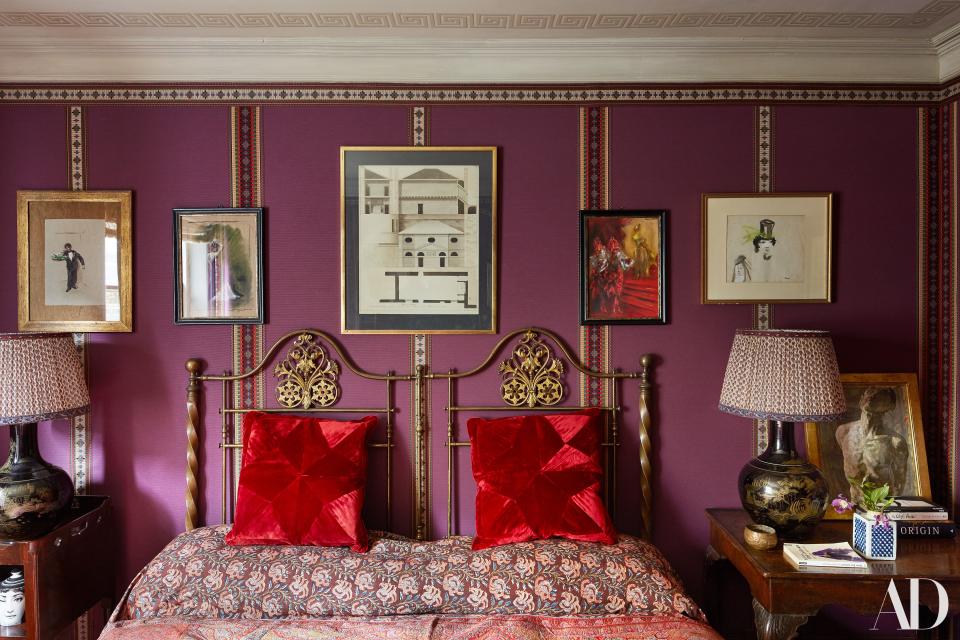
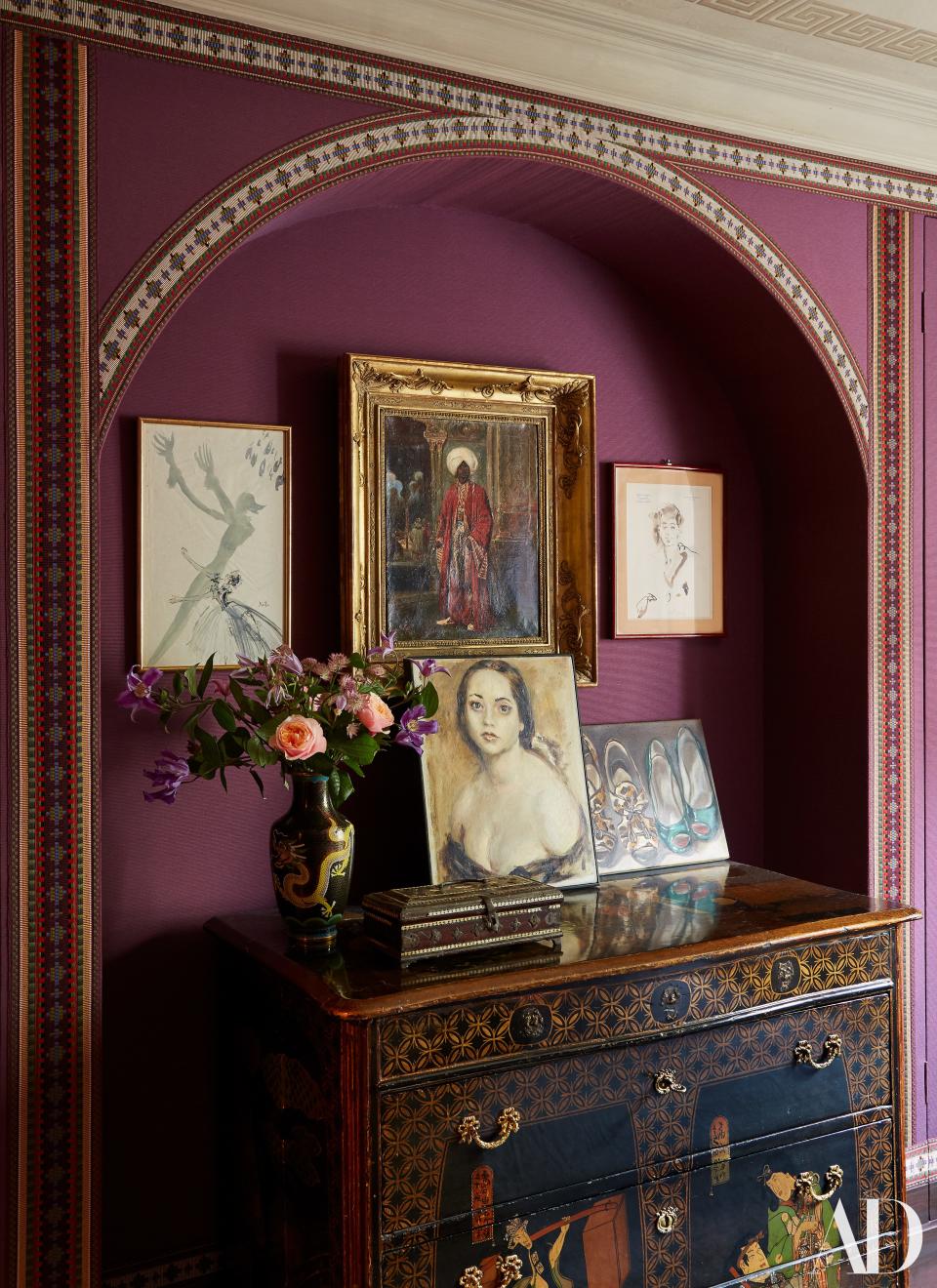

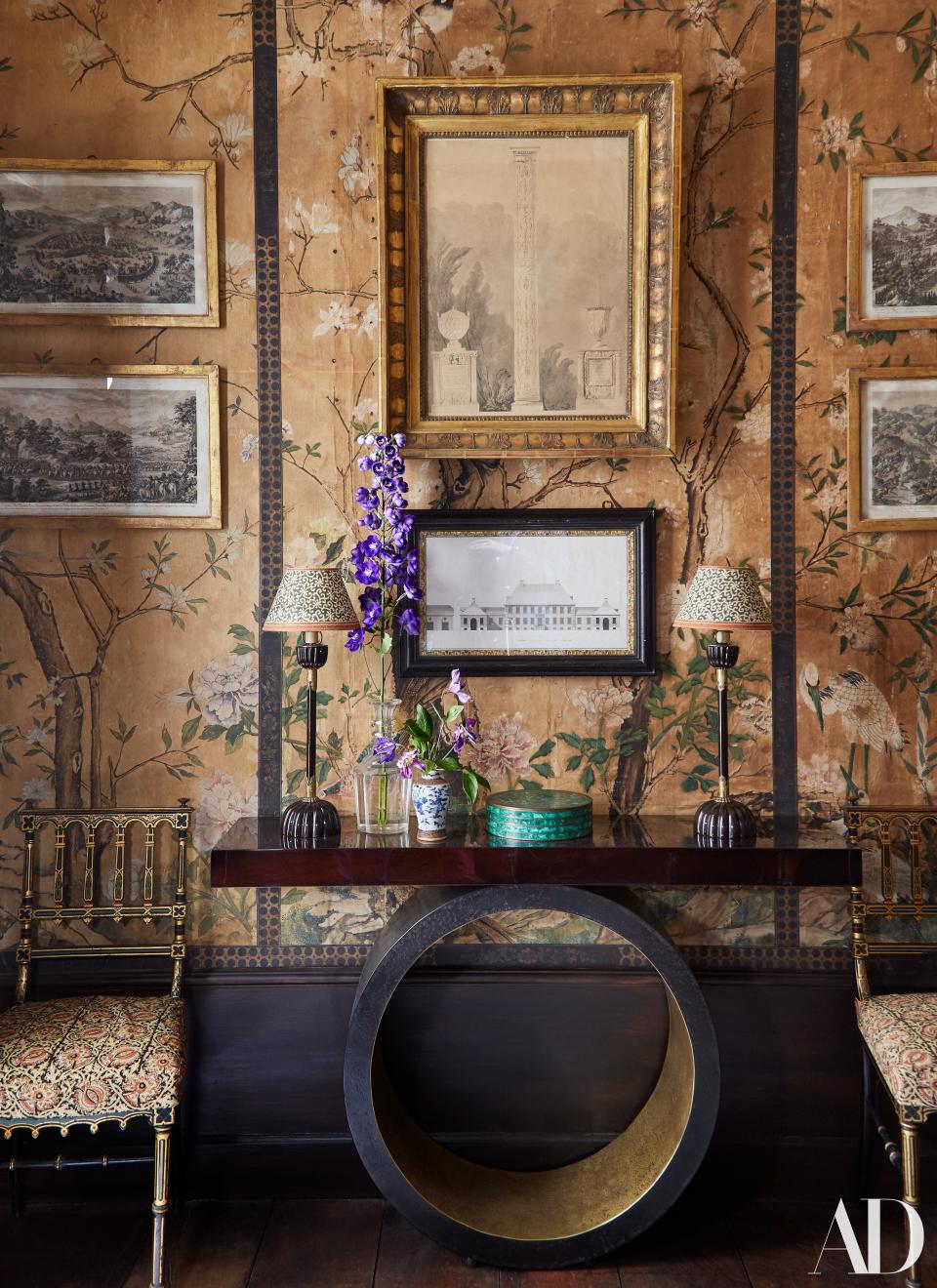
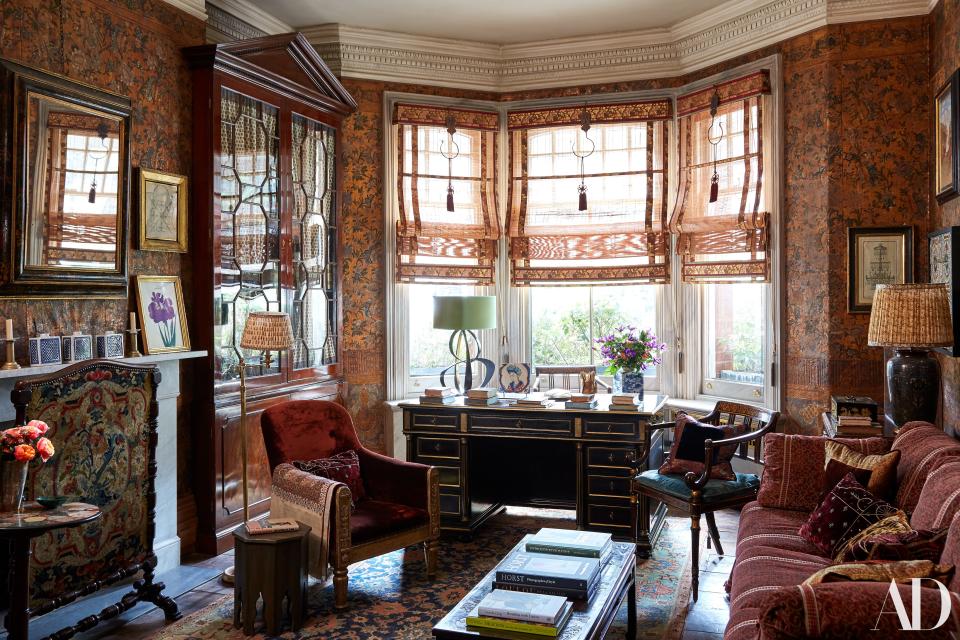

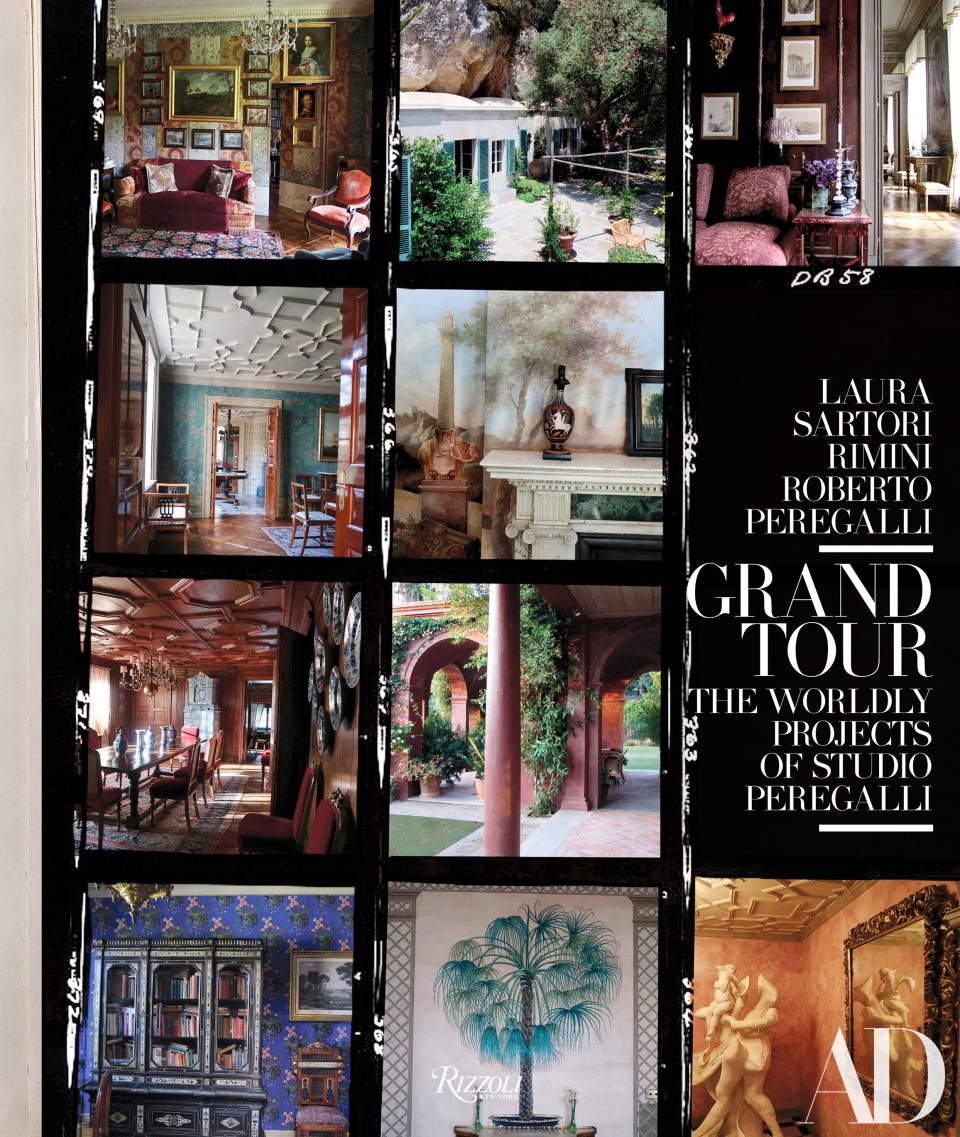
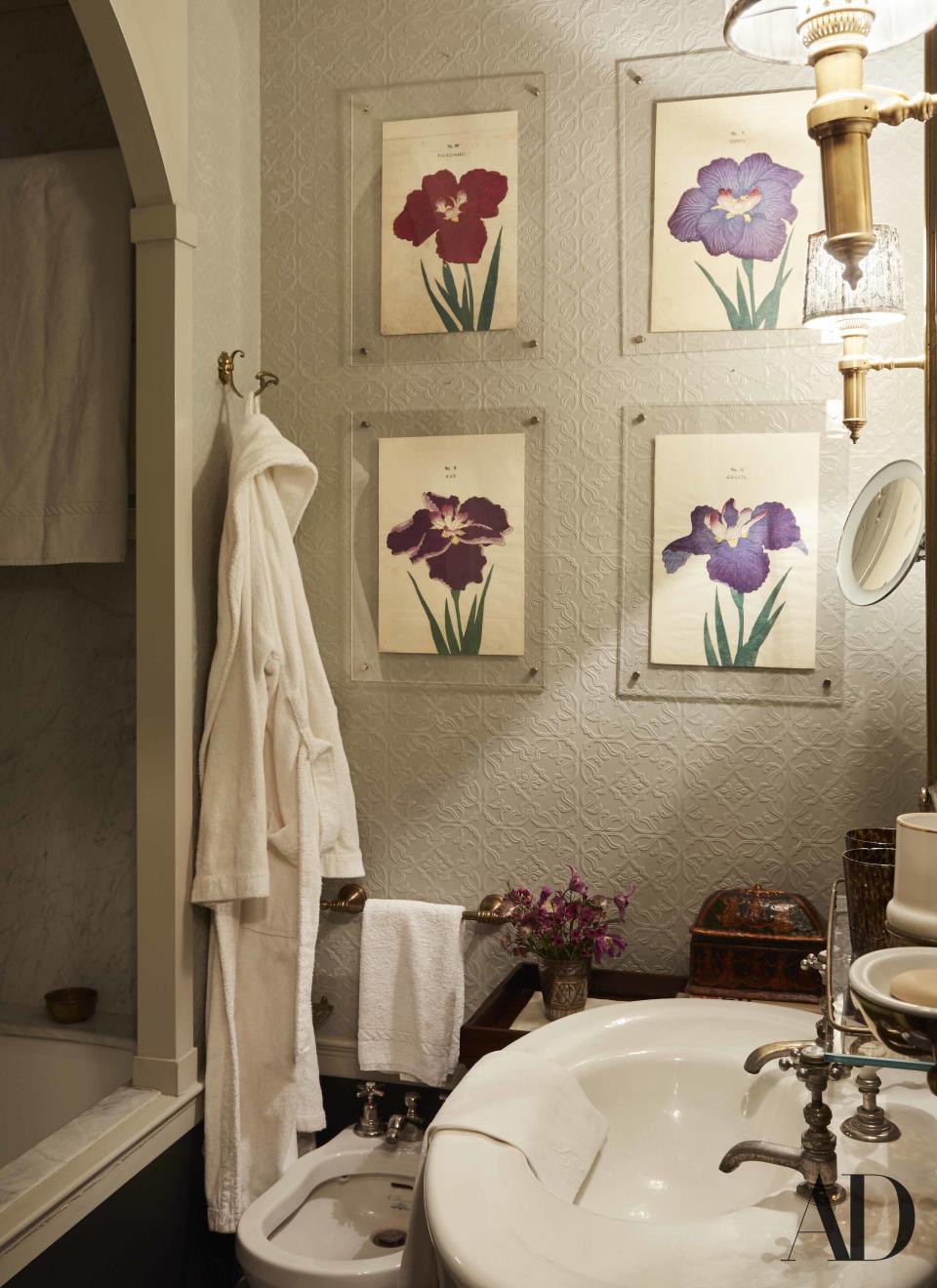

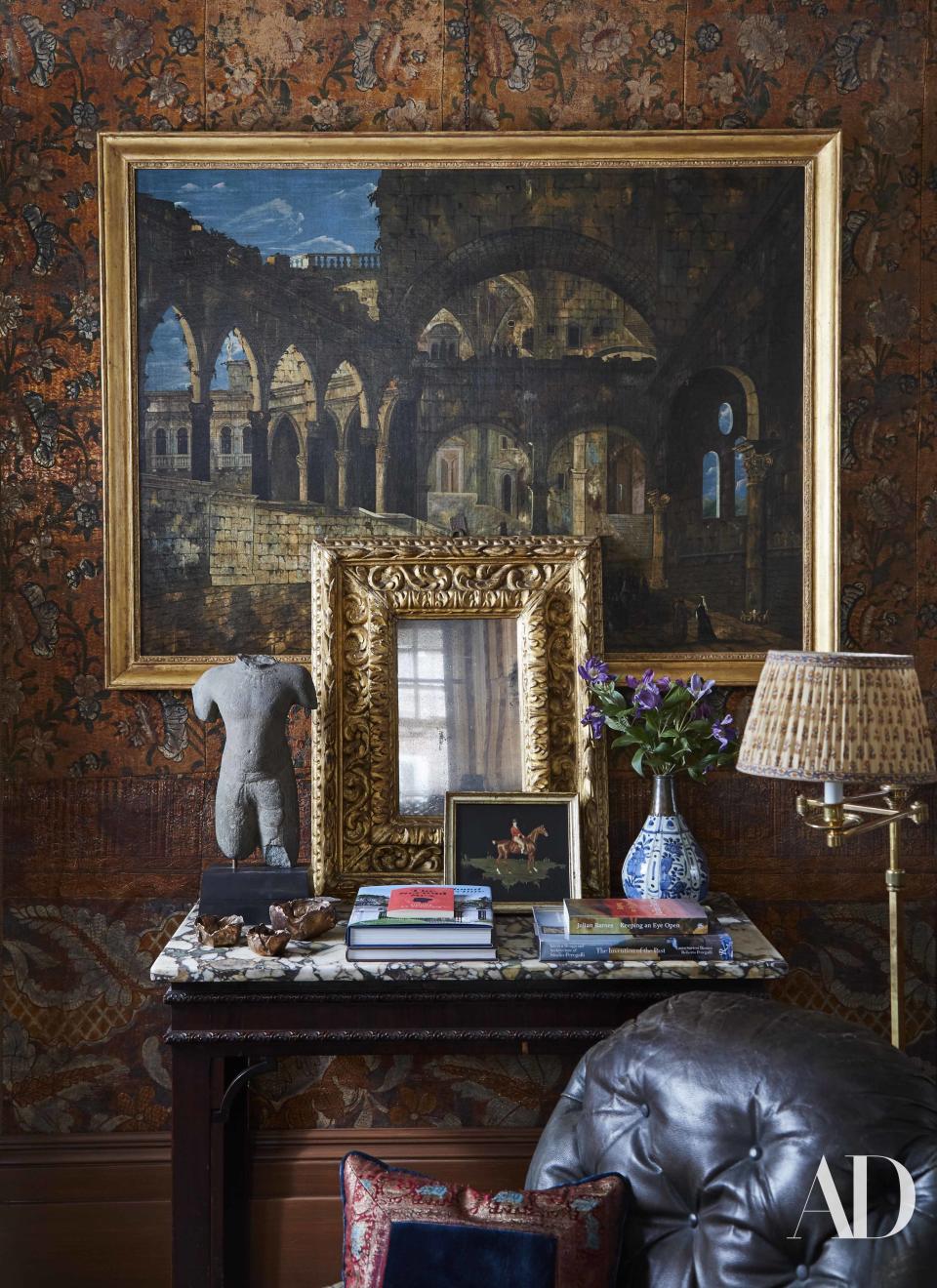
Within this abiding springtime, the designer has assembled things old and things new—“as always I like to do”—such as a ringed bronze table lamp by Hervé Van der Straeten. Many of her most beloved possessions, though, are small, requiring close inspection to appreciate their enrapturing charms. “I am not a rich person; I am a working person,” says Sartori Rimini, no fan of “simple interiors with a piece of art that cost millions.” As she observes, “You can do nice houses without spending a lot of money, in the sense of finding nice-quality objects but not necessarily costly ones.”
Given the evidence, that means framed Spanish tiles, antique monochrome etchings of mythological scenes, curious English and European architectural drawings, and a 19th-century crystal decanter pressed into service as a vase for a spray of delphiniums. Sartori Rimini has a passion for Orientalist evocations of turbaned men, so an 18th-century painting of one can be found in the living room; another is displayed in the bedroom above a 19th-century Japanese-style chest of drawers. In the entrance hall, now ennobled by an arched ceiling, a Safavid vase of great beauty sits beneath a big gold mirror by Alessandro Diaz de Santillana, the late Venice glass artist. “I love having things made by friends,” the designer says.
Another fond relationship brought into play in her Tite Street home is embodied in the creative tricks—the jacquard stripes appliquéd on the bedroom walls, the patchworked red velvet cushions—that she and Peregalli were taught by their mentor, the master atmospherist Renzo Mongiardino. “From him we learned that you can play with cutting fabrics and putting them back together, you can play with borders, you can play with trimmings—you can just play,” Sartori Rimini says. “The idea is that something was made just for you.”

